10 Common, Edible Mushrooms to Forage and Enjoy
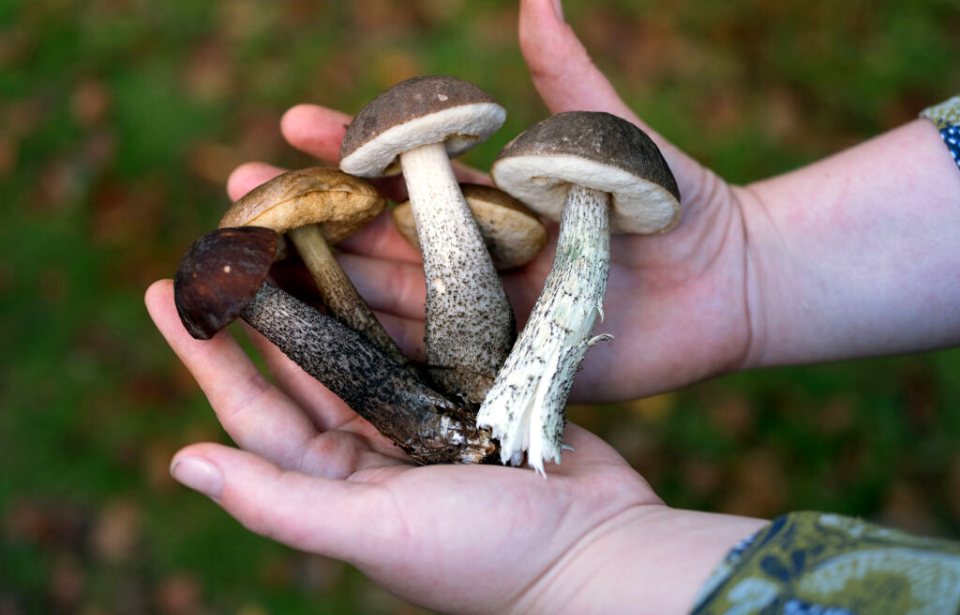
Searching for mushrooms can be a fun way to spend time outdoors while also scoring free ingredients to make delicious meals! These 10 species are found throughout North America, and are a great way for beginner foragers to test their skills and learn something new. Keep reading to learn more!
Before you forage…
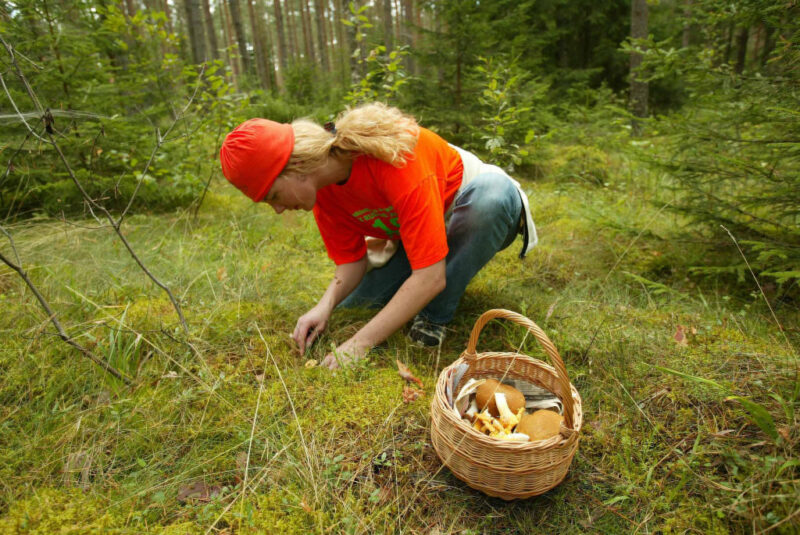
Before you head out into the woods in search of mushrooms, keep these tips in mind:
- Don’t eat mushrooms raw – always cook before consuming.
- Always try a small piece of the mushroom before consuming the entire thing, in case of allergies or reactions.
- Don’t eat the mushroom unless you’re certain its an edible species.
- Don’t over-harvest – leave some for others to find, and allow the mushrooms to come back the following year.
- Avoid mushrooms that look old, spoiled or have lots of insect activity.
Chicken of the Woods
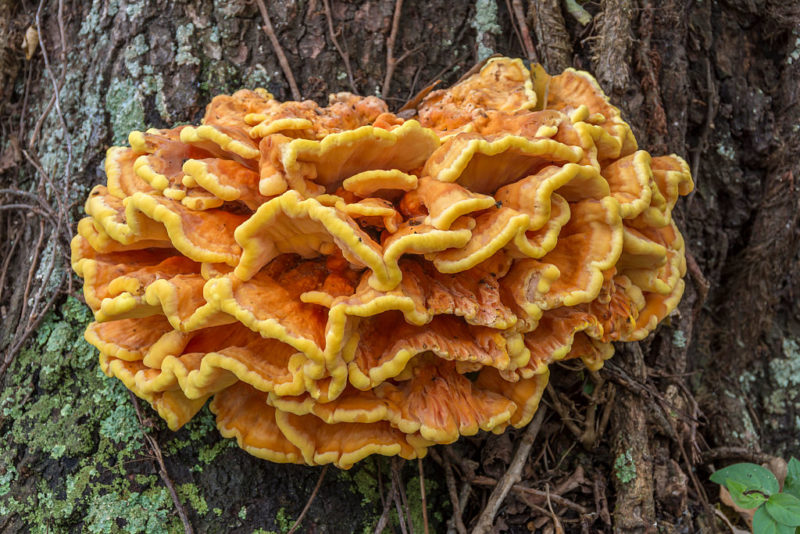
Known for its delicious chicken-like texture and flavor, the Chicken of the Woods is a favorite among foragers. It can be found growing on oaks and other hardwood trees throughout the summer and fall. This mushroom can cause stomach upset in some people, so be sure to try just a little bit before eating an entire one!
Alternate Names: Sulphur Shelf, Chicken Fungus
How to ID: Chicken of the Woods is easily identifiable, thanks to its brilliant orange and yellow coloring, as well as its fanned-out – or “bracket” – shape. The edges of the mushroom are typically lighter and ruffled-looking.
Chanterelle
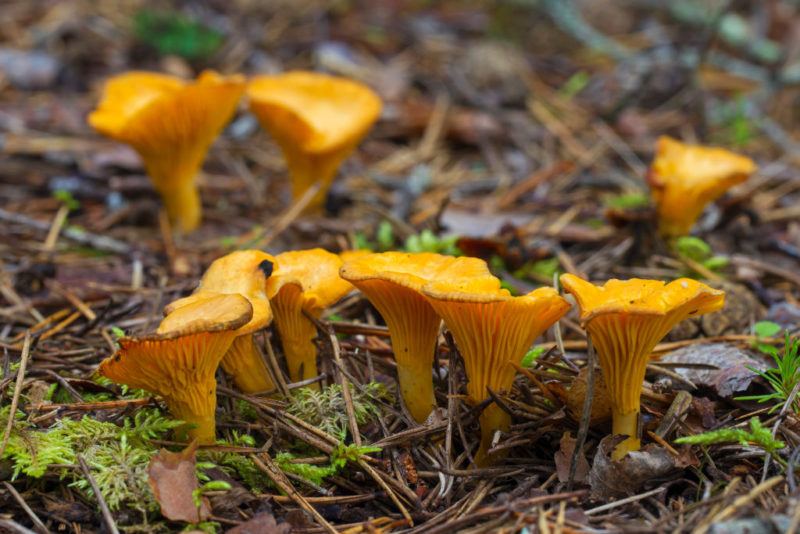
The bright orange Chanterelle mushroom sticks out like a sore thumb on the forest floor, making it incredibly easy to find and identify! Chanterelles can be found from late July to October throughout North America, and usually pop up after heavy rains. They have a slightly peppery and fruity taste, and are a perfect treat when sautéed in butter.
How to ID: The caps of the Chanterelle are funnel-shaped, the flesh usually smells like apricot or pumpkin, and the inside looks white when cut open. They don’t have true “gills,” but, instead, have ridges along the underside that extend down the stem.
True Morels
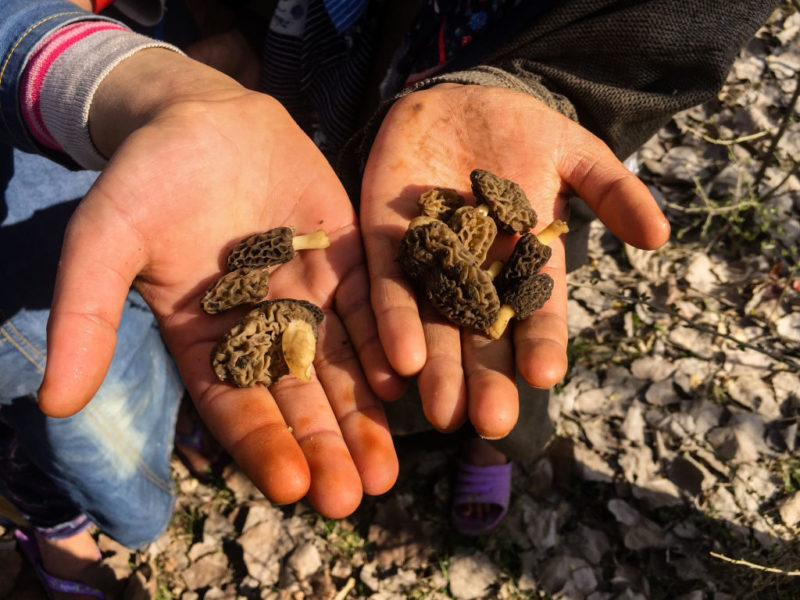
True Morels are some of the most highly sought-after mushrooms in the world – their woody and nutty taste has made them a favorite among home chefs and high-end restaurants. Morels are found in early spring and can be difficult to find, meaning most harvesters suggest starting your search once the trees begin to bud in your neighborhood.
To increase your odds of scoring Morels, learn to identify elm, ash, aspen, cottonwood and apple trees. Maple trees found along the edge of clearings and old orchards are also great spots to forage! These trees may not have leaves in the spring, so be sure to take note of the species in the summertime before returning to forage in the spring.
Alternate Names: Common Morel, Yellow Morel, Sponge Morel, Molly Moocher, Haystack, Dryland Fish
How to ID: There are over 40 species of Morels that come in a variety of colors, including yellow and black. The mushroom is easily recognized by its bulbous shape and honeycomb-like cap.
There are also many species of lookalikes called “False Morels.” To find true ones, slice the mushroom in half and inspect the inside. If the interior has a hollow stem, it’s a True Morel. Longer stems with a cotton-like tissue inside or one enveloped in a series of brain-like folds with a cap that looks more wrinkled than honeycomb-shaped are usually signs of a False Morel.
Giant Puffball
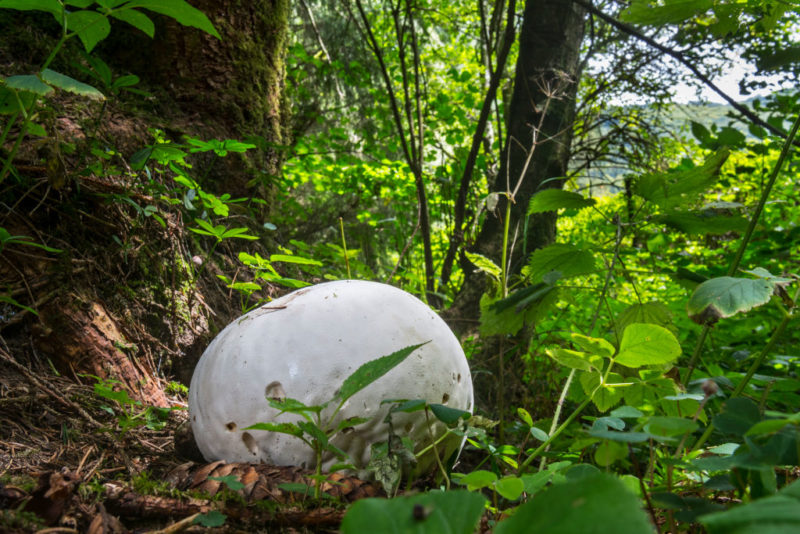
In late summer and early fall, the forest floor begins to explode with these giant marshmallow-like balls. The Giant Puffball isn’t just a cool mushroom to observe, it’s also great to eat! The species isn’t only easy to find, but incredibly easy to identify. Unlike other mushrooms that rely on certain trees as their host, Puffballs can pop up just about anywhere.
Before you take it home to cook, be sure to slice the mushroom in half. If the inside is purely white, it’s good to eat! If any kind of discoloration or holes are found, it’s no good. Puffballs are made up of largely spores and protein, and just like other high-protein foods, you should keep them in the fridge to keep them from going bad.
The Puffball can be sliced and used like tofu or other meat substitutes, or even made into a gluten-free pizza crust!
How to ID: While other Puffball species exist, they’re significantly smaller, so there aren’t technically any look-alikes. So long as the mushroom is around the size of a soccer ball, it’s safe to forage!
Shaggy Mane
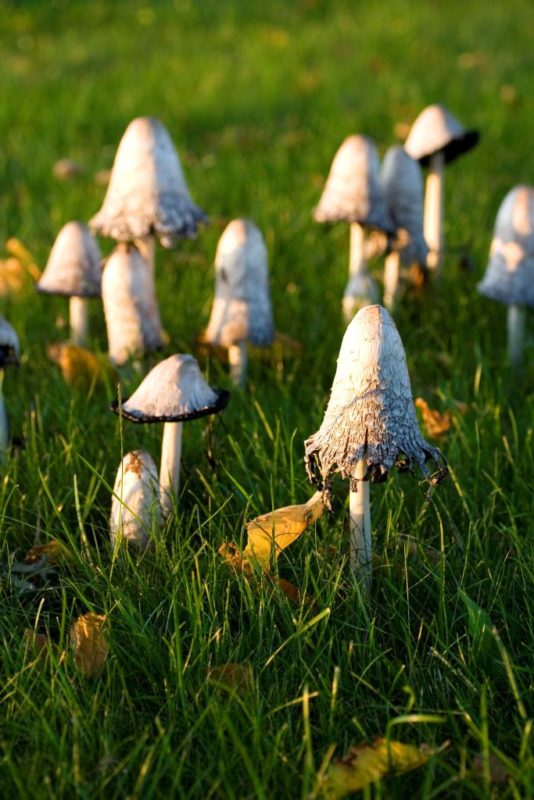
The Shaggy Mane gets its name from the scaly-looking caps that start in a cone shape and grow into an umbrella-like cap that secretes an inky-black fluid. These meaty-tasting mushrooms are incredibly fragile, even when fresh, so be sure to handle them with care! They also don’t keep well, so only harvest if you expect to eat them within a few hours.
Shaggy Manes are a great beginning mushroom to forage, as they’re commonly found along roadways, driveways and lawns. As the mushroom ages and becomes inky, its flavor deepens and becomes more aromatic. If you touch one and it leaves an inky stain on your finger, however, it means it’s past its prime.
Alternate Names: Lawyer’s Wig, Ink Cap
How to ID: The Shaggy Mane has upturned “scales,” which give it its name. These can appear white, brown or red in color, while the rest of the cap is white. To be extra sure you’ve foraged the right species, check to see if it has the characteristic hollow stem.
Maitake
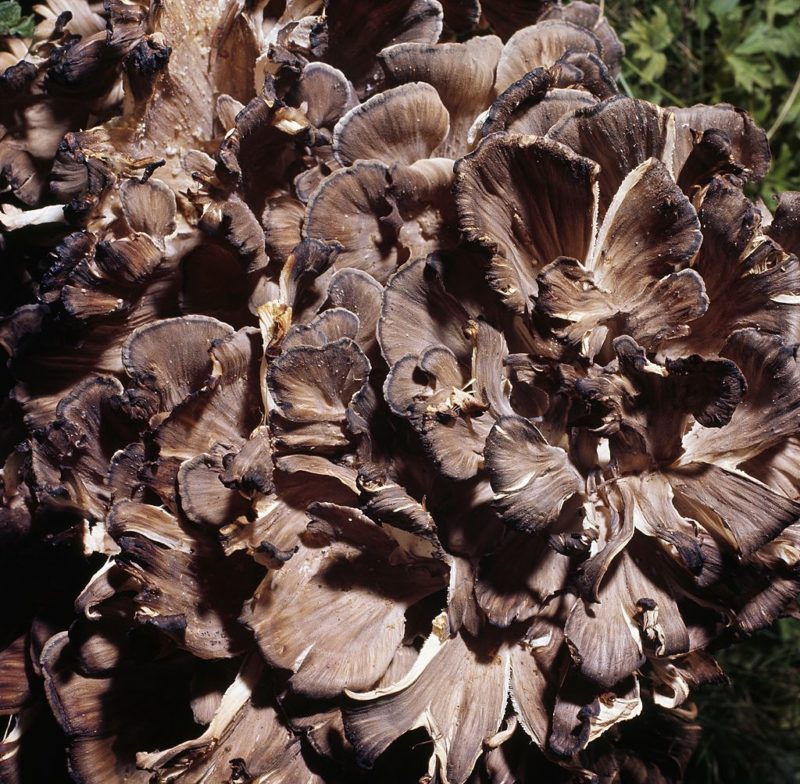
Not to be confused with Chicken of the Woods, Hen of the Wood – or Maitake – is a favorite of foragers, chefs and healers alike! Its name translates to “dancing mushroom” in Japanese, which comes from stories of people happily dancing after eating it.
Not only does the Maitake taste amazing, it also has incredible medicinal benefits. It’s rich in vitamins and antioxidants, and recent research has shown it aids in preventing cancer, lowering cholesterol and helping to treat Type 2 Diabetes.
Alternate Names: Sheep’s Head, Ram’s Head, Signorina mushroom, Dancing mushroom, King of the mushrooms, Kumotake
How to ID: The Maitake mushroom is a polypore bracket fungus that grows on the base of oak trees or other hardwood species. It can be found throughout North America from August to November.
From underneath, the Maitake has stems that look like pieces of broccoli. The younger mushrooms have a pleasant smell, while the older ones have a horrible odor, so try to harvest younger specimens!
Lion’s Mane
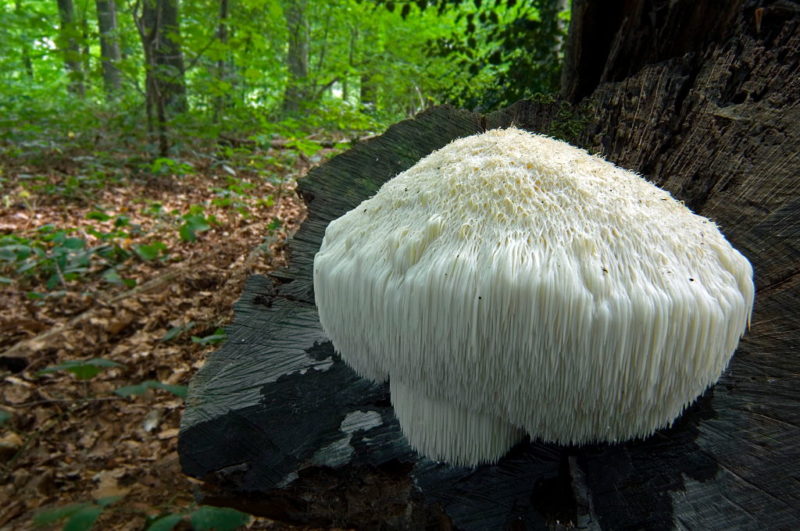
Lion’s Mane is an all-around fantastic mushroom for beginner foragers! Not only does it have zero look-alikes, it tastes amazing and has been used in medicine for centuries.
Lion’s Mane resembles a seafood- or lobster-type flavor, and it’s one of the best healing mushrooms on the planet. It’s known to help improve cognitive function, and there are several ongoing studies looking to see if it could be used to treat Alzheimer’s and other degenerative brain diseases.
Alternate Names: Mountain-Priest mushroom, Bearded Tooth Fungus
How to ID: Lion’s Mane can be found throughout North America growing on walnut, beech, maple, birch and black walnut. It grows in an icicle-like formation with white coloration. If the mushroom is beginning to yellow, it’s past its prime, so only harvest the creamy white specimens.
Dryad’s Saddle
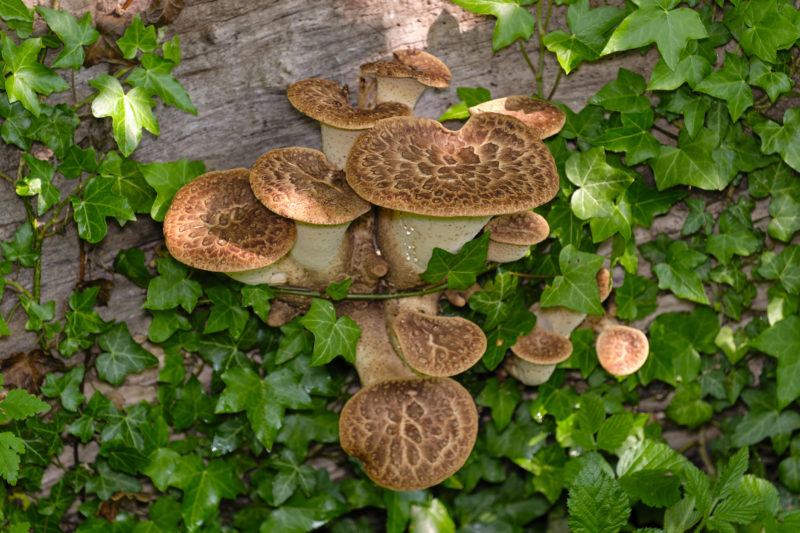
Dryad’s Saddle is commonly found in the early-to-late spring season and can grow to be huge! With a taste resembling cucumber, harvesting smaller and younger mushrooms will yield the best results when cooking – the larger are usually too tough to enjoy.
If you’re hoping to score some Dryad’s Saddle, head into the forest after the first heavy rains of the season and you’re bound to find them!
Alternate Names: Scaly Polypore, Pheasant’s Back
How to ID: The Dryad’s Saddle grows almost exclusively on dead elm trees, and can be identified by the brown, feather-like patterns on the cap, which give it the alternate name, Pheasant’s Back. They grow in brackets or shelf-like structures.
Oyster
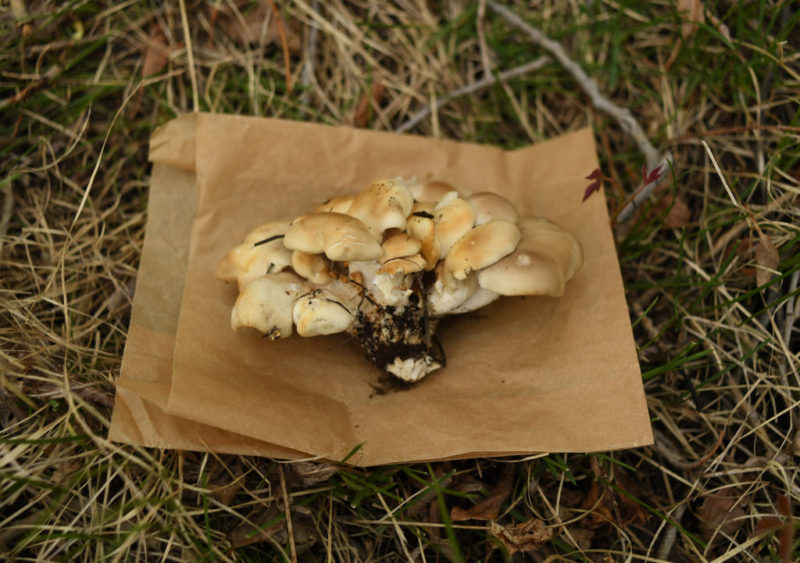
Oyster mushrooms have become a favorite in restaurants and even grocery stores over the last decade. Their meaty taste and firmer texture make them an amazing addition to risotto, pasta or even as a meat substitute.
You can also find them in the wild! They grow across North America throughout the fall season, and love moist conditions and lush forests. They’ll usually grow in clusters on rotting logs, so looking along creeks and streams is a great place to start.
How to ID: Luckily, these amazing mushrooms are very easy to identify! Oysters will always grow on wood, not on the ground. While they come in a variety of colors, they usually have white or light-colored gills that run down their stems.
Reishi
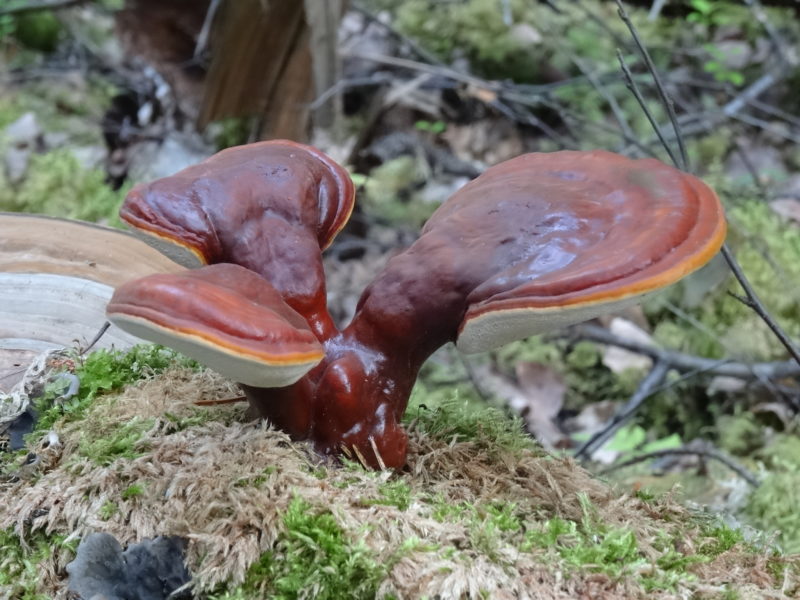
Reishi are highly prized in the medicinal mushroom community. They’re also called the “Mushroom of Immortality,” thanks to their ability to improve the immune system, ward off cancer and help alleviate fatigue.
Wild Reishi’s will have a kidney-shaped shiny top with reddish-brown colors. Only harvest fresh, younger mushrooms with white undersides, since bruised ones can carry a dangerous mold. The mushrooms are usually dried immediately after harvesting, and to ensure bugs and larvae won’t eat your dried stock, keep the pieces in the freezer for several days.
Use the dried Reishi to make tea in the wintertime to fend off colds!
Alternate Names: Red Reishi, Basidiomycetes mushroom, Lingzhi, Ling-chih, Mannentake
More from us: The Nearly Two-Century-Long History of Chicago’s Famed Grant Park
How to ID: These mushrooms are a polypore, meaning the underside features a sponge-like porous surface, rather than gills. To be certain you’ve found a Reishi, press on the bottom and see if a brownish bruise appears.
